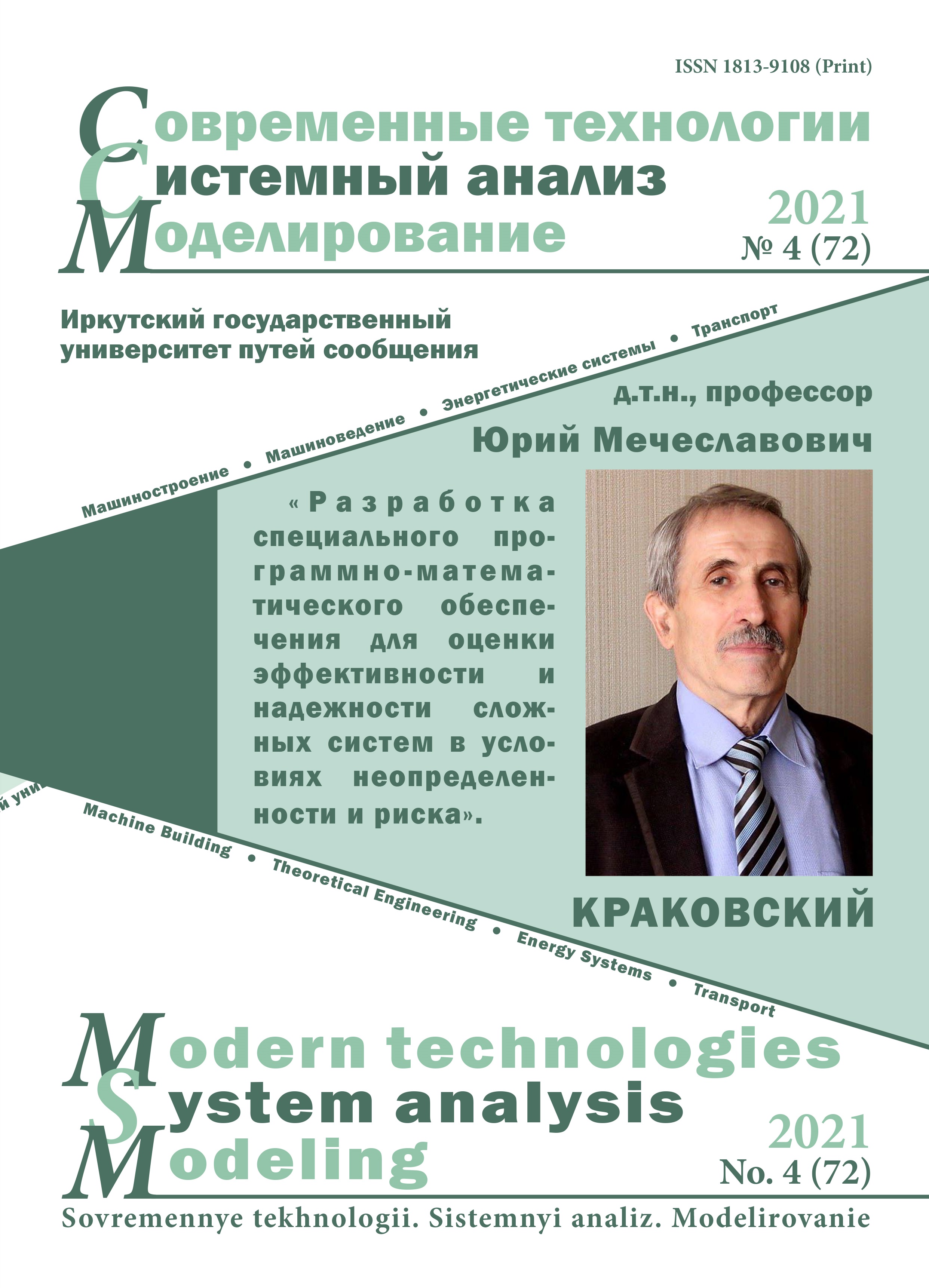Methodology for modeling freight transportation based on statistical data of commodity groups
Keywords:
modeling, freight transport, transport infrastructure, modeling methodology, statistic dataAbstract
The article outlines the problem of generating freight traffic based on the available statistics for product groups in quantitative terms. The transport model is an important tool for planning and developing transport infrastructure. Its role is to identify bottlenecks in the simulated transport infrastructure. The presented methodology determines the procedure for processing the transport model depending on the goals, objectives and planned investment costs. It can be applied to new transport projects leading to a change in the quality, volume or reliability of the transport infrastructure. Modeling and analyzing intensity data is one of the ways to predict the demand for transportation and the behavior of the population in the area in question, as well as planning future route patterns. There are several possible alternative solutions for each transport problem, some of which are presented in the form of investment projects. However, testing multiple alternative designs in the field is nearly impossible due to the complexity and / or high cost. Transport modeling allows a variety of options to be tested. The financial costs and labor intensity when using simulation modeling are minimal. Transport models can be conditionally divided depending on: the length of the simulated territory, type (s) of transport, time costs; availability of the software package. Transport models used in practice are often a combination of model types. The different types of transport models are not strictly defined and may overlap. Thus, using the methodology for modeling freight traffic based on statistical data of commodity groups or a transport model, it becomes possible to increase the efficiency of the multimodal network by restoring the correspondence matrix.
References
Лебедева О.А., Крипак М.Н. Моделирование грузовых перевозок в транспортной сети // Вестник Ангарского государственного технического университета. 2016. № 10. С. 182–184.
Лебедева О.А., Антонов Д.В. Моделирование грузовых матриц корреспонденций гравитационным и энтропийным методами // Вестник Иркутского государственного технического университета. 2015. № 5 (100). С. 118–122.
Лебедева О.А., Крипак М.Н. Развитие городских грузовых систем с учетом концепции городского планирования // Сборник научных трудов Ангарского государственного технического университета. 2016. Т. 1. № 1. С. 244–247.
Федотова А.С., Лебедева О.А. Степень использования пропускной способности автомобильных дорог // Сборник научных трудов Ангарского государственного технического университета. 2015. Т. 1. № 1. С. 270–274.
Полтавская Ю.О. Применение геоинформационных систем для обеспечения устойчивого развития транспортной системы города // Информационные технологии в науке, управлении, социальной сфере и медицине Сборник научных трудов VI Междунар. науч. конф. под редакцией О.Г. Берестневой, В.В. Спицына, А.И. Труфанова, Т.А. Гладковой. 2019. С. 164–167.
Полтавская Ю.О. Оптимизация транспортной сети на основе минимума общих затрат на доставку грузов // Вестник Ангарского государственного технического университета. 2019. № 13. С. 178–183.
Шаров М.И., Михайлов А.Ю., Дученкова А.В. Пример оценки транспортной доступности с использованием программного продукта PTV «VISUM» // Изв. вузов. Инвестиции. Строительство. Недвижимость. 2013. № 1(4). С. 133–138.
Лебедева О.А. Анализ проектирования транспортных зон на основе моделирования сети // Вестник Ангарского государственного технического университета. 2019. № 13. С. 172–177.
Гозбенко В.Е., Крипак М.Н., Иванков А.Н. Совершенствование транспортно-экспедиционного обслуживания грузовладельцев. Иркутск: Изд-во ИрГУПС, 2011. 176 с.
Lebedeva O.A., Kripak M.N., Gozbenko V.E. Increasing effectiveness of the transportation network through by using the automation of a Voronoi diagram. Transportation Research Procedia. 2018. Vol. 36. pp. 427–433.
Walancik M., Kurowska-Pysz J. Cross-border cooperation of local governments in the field of safety in Polish-Slovak projects. Theoretical approaches and a case study. J. Def. Resour. Manag. 2015, 6, pp. 45–54.
Guo R. Studying Borders. Evaluating Border Effects. Cross-Border Resource Management, 3rd ed.; Elsevier:Amsterdam, The Netherlands, 2018.
Castanho R.A., Cabezas J.; Fernández-Pozo L. Territorial Planning and Development Tools in Transboundary Areas. Study Case of the OTALEX-C Space. In Conference Paper, Proceedings of the Institute of Geography and Spatial Planning–University of Lisbon & International Journal of E-Planning Research, Lisbon, Portugal, 31 March–1 April 2016; Institute of Geography and Spatial Planning, University of Lisbon: Lisbon, Portugal, 2016.
Castanho R.A., Loures L., Cabezas J., Fernández-Pozo L. Cross-Border Cooperation (CBC) in Southern Europe–An Iberian Case Study. The Eurocity ElvasBadajoz. Sustainability 2017, 9, 360. [CrossRef]
Bufon M., Minghi J., Paasi A. (Eds.) The New European Frontiers: Social and Spatial (Re) Integration Issues in Multicultural and Border Regions; Cambridge Scholars Publishing: Cambridge, UK, 2014.
Balogh P.б Pete M. Bridging the Gap: Cross-border Integration in the Slovak–Hungarian Borderland around Štúrovo–Esztergom. J. Borderl. Stud. 2018, 33, pp. 605–622.
Telle S., Svensson S. An organizational ecology approach to EGTC creation in East Central Europe. Reg. Fed. Stud. 2020, 30, pp. 47–71.
Kuzmin O.V., Seregina M.V. Plane sections of the generalised Pascal pyramid and their interpretations. Discrete Mathematics and Applications, 2010, 20(4), pp. 377–389.
Balagura A.A., Kuzmin O.V. Generalised Pascal pyramids and their reciprocals. Discrete Mathematics and Applications, 2007, 17(6), pp. 619–628.
Dohn K., Knop L., Kramarz M., Przybylska E. Transport Intermodalny w Kontek´scie Rozwoju Regionalnego, Wyd; Dom Organizatora: Toru ´n, Poland, 2019.
Jacyna-Golda I., Zak J., Golebiowski P. Models of traffic flow distribution for various scenarios of the development of proecological transport system. Arch. Transp. 2014, 32, pp. 17–28.
Roider O., Sammer G., Riegler S., Klementschitz R., Bezak B., Balko G. Challenges of border-crossing transport demand surveys – Methodical solutions and experiences with their organization to achieve high quality, an UE-perspective. Transp. Res. 2018, 32, pp. 394–403.
Nie T., Ye K. Demystifying the barriers to transport infrastructure project development in fast developing regions: The case of China. Sustainability 2017, 9, 1915.
Project TRANS TRITIA, D.T3.2.4 Report, Implementation plan for TRITIA region. URL: https://www.interreg-central.eu/Content.Node/Implementation-plan-for-TRITIA-region.pdf.


